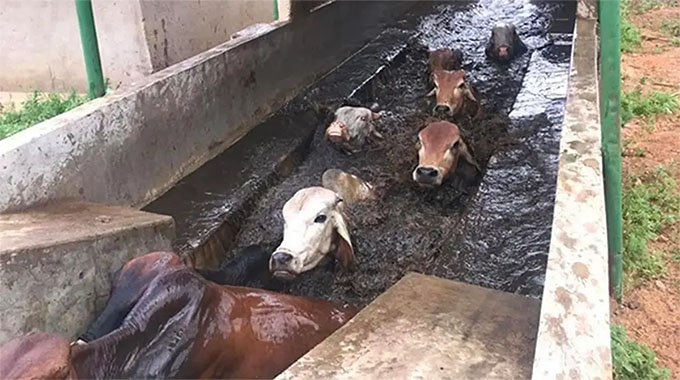‘Sugarcane farmers must collaborate to eradicate yellow aphids’

Edgar Vhera Agriculture Specialist Writer
STAKEHOLDERS in the sugarcane industry have called for a holistic approach in the fight to contain widespread infestations of sugarcane plots by yellow aphids whose effective control requires all crops within the same locality to be sprayed at once to deprive the pest of safe havens.
Hippo Valley Productive Sugarcane Farmers Association (HVPSFA) Chairman Mr Patrick Muvingi said haphazard spraying of fields against yellow aphids by farmers on different plots was not helping to eradicate the menace.
“There is need for the Government to order sugarcane producers to spray their fields at the same time, whether infested or not. If one farmer controls the pest in his/her field while the neighbour does not do the same, chances are the aphids will invade that unsprayed field. With time, the aphids will return to the first field to be sprayed. Routine spraying of all sugarcane fields will help eradicate the problem,” said Mr Muvingi.
Mr Muvingi observed that aphids sapped juice from the leaves and had the capacity to cause a reduction in yields of up to 10 percent.
“The aphid infestation started manifesting three to five years ago but on a small-scale with the levels of invasion expanding this year. If not controlled holistically, yellow aphids’ infestations can be disastrous in the same manner the fall armyworm ravages maize.
“Farmers can treat their fields with Dimethoate or Allice, but the challenge is these chemicals are expensive for the ordinary farmer,” added Mr Muvungi.
The Zimbabwe Sugar Association Experiment Station (ZSAES) has since intensified engagement efforts with out-growers to control the pests that have infested almost all of the three sugarcane plantations in Chiredzi.
ZSAES Director Dr Audrey Mabveni said the level of infestation this year was very high due to the hot weather and the stressed condition of the sugarcane crops that provides a conducive environment for proliferation of the pest.
Elaborating further ZSAES entomologist Ms Concelius Mukanga said the yellow sugarcane aphid was detected in Europe around 1971 and only came to Morocco in 2006. It was then detected in South Africa around 2013 and was noticed in the country in 2015. It was a sporadic pest noticed in some years then went underground before re-surfacing around 2019. From 2020 to date it has graduated from sporadic to a major pest.
“Incidences of high infestation occur around October, thanks to the high temperatures. Yield losses from our assessment are around 5, 2 percent. We are conducting assessments on the hectarage affected and but it can be over 20 percent.
“Yellow sugarcane aphids have a devastating effect on young cane plants while harm is minimal on older plants. Our organisation carries assessments, tests chemicals and recommends the applicable ones,” said Ms Mukanga.
Among the chemicals recommended to control the pest are Allice and Actara.
“We encourage farmers to make sure their fields and surrounding areas are free from weeds so that the pest does not find a habitat to escape to when the fields are sprayed. We also recommend farmers to coordinate and spray their fields at the same time so that the pests do not find a safer habitat. Mixing of crops also causes the pest infestation to increase,” added Ms Mukanga.






Comments